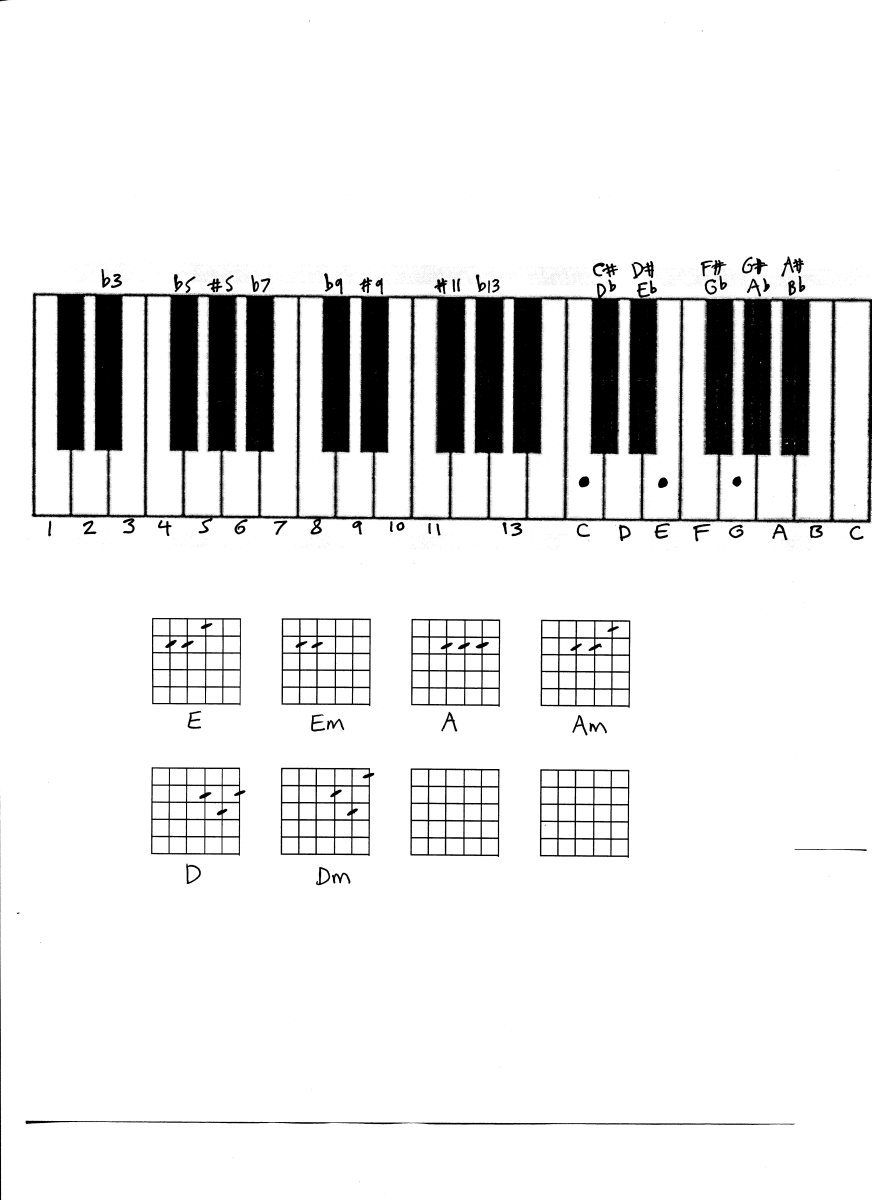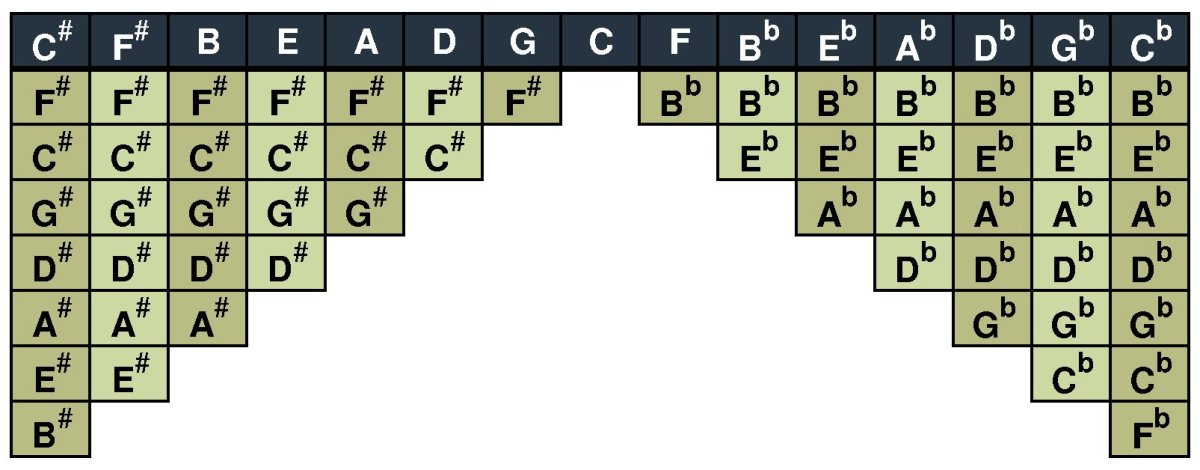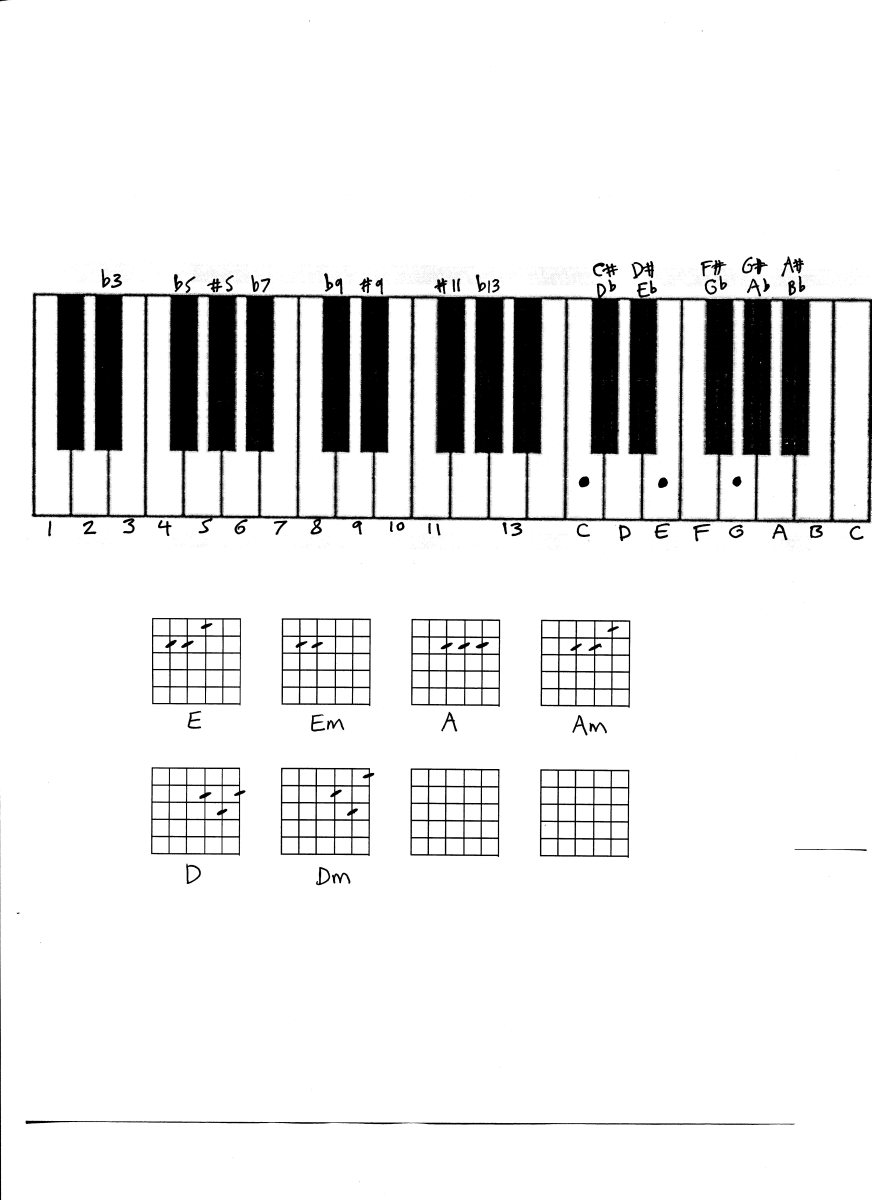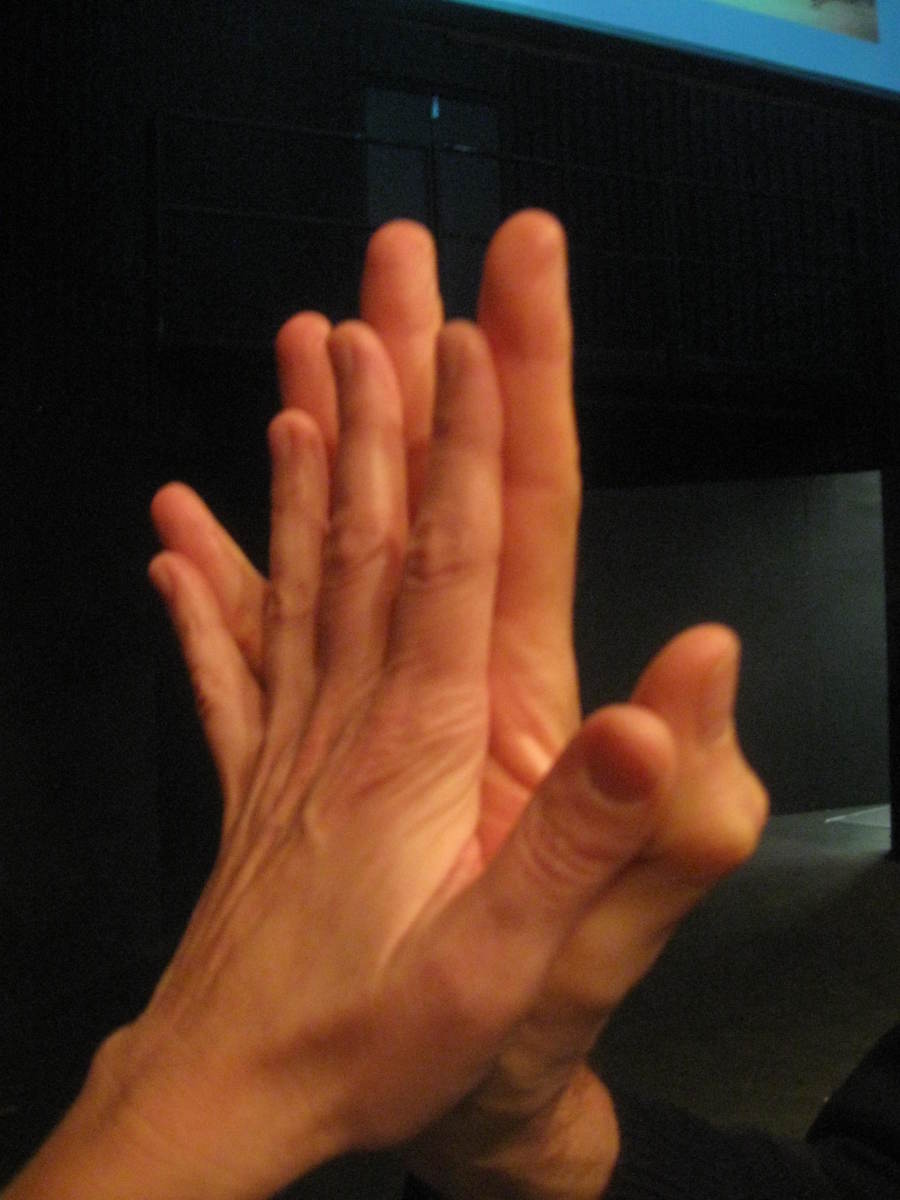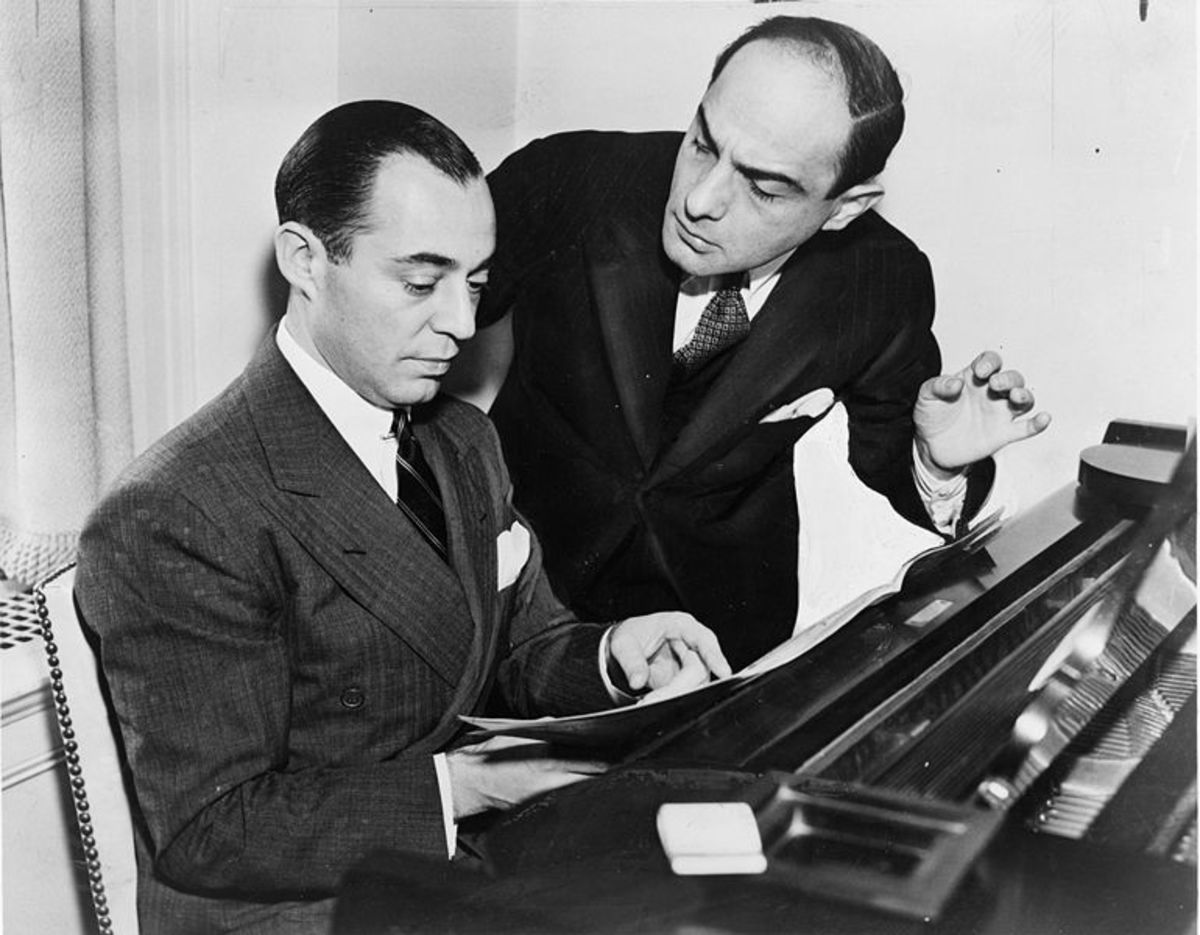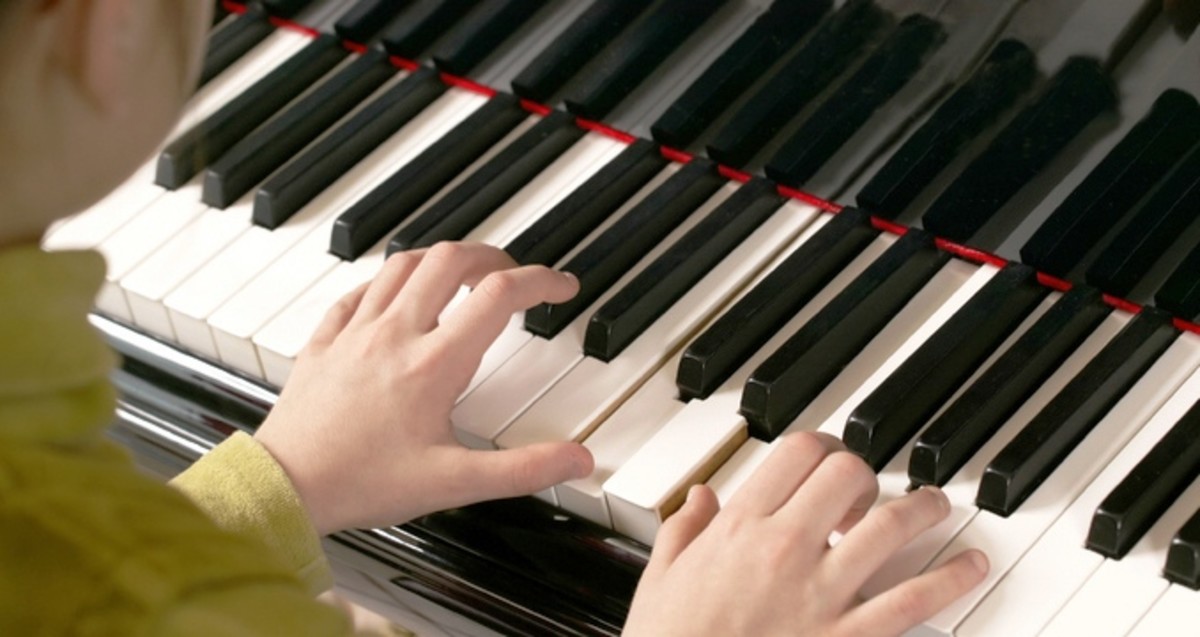What Are The Notes On A Piano Keyboard?
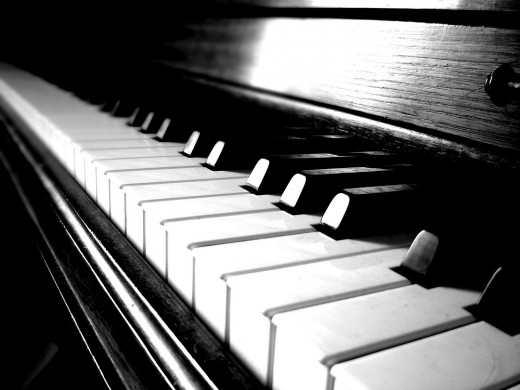
Notes On A Piano Keyboard: Explained
Ever looked at a piano keyboard and thought: "That just looks like a mess of black and white?"
Ever wondered what each note is on the keyboard? This short piece will tell you just that.
Layout of a piano keyboard
You will notice that the keyboard is split into two groups:
- Black Keys
- White Keys
You will see that the black keys are grouped into groups of two, then three, and that this continues across the entire length of the piano keyboard.
Finding middle C
Middle C is the starting point for anything related to piano music. It is the note from which all others can be worked out. To find it, look for the group of 2 black keys which sits closest to the middle of the piano keyboard (hence the name 'middle C').
The white key which sits to the immediate left of the left-most black key is middle see.

What are the other white keys?
Now you know middle C, it's easy to work out what the other white keys represent on the piano keyboard. Moving one white key at a time and moving to your right, the notes after middle C are as follows:
D, E, F, G, A, B
Now stop!
You'll notice if you carry on working your way up, you have reached another C note. The entire piano keyboard continues like this - repeating itself each time you hit a C.
Note, if you are working them to your left, just do the same but backwards: B, A, G, F, E, D - right back to C.
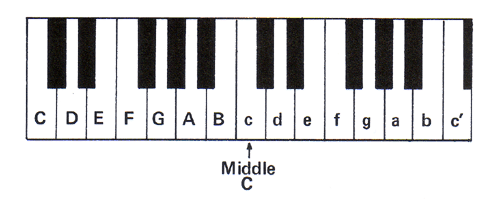
What about the black keys?
Don't worry - the black keys on a piano keyboard are not just for show, they also have note names.
All the letters have been taken up by the white keys - but don't panic!
The black notes represent notes which are in between the other notes, and as such don't have individual names themselves - in fact, they can be referred by 2 different names! This can be confusing, but once you know how to work it out however, it becomes fairly simple.
You can name the note in two ways, as follows:
- Using the white key immediately to the left. If the key which falls to the left is a D, the black key to the right of the D is called D Sharp (which is often written as D#)
- Using the white key immediately to the right. If the key which falls to the right is an E, the black key to the left of the E is called E Flat (which is often written as Eb)
If you notice, in the above examples I used the same black key as an example - and the key I used can be referred to as either Eb or D#.
Take a look at the example below for a clearer picture of how this works for each black key on the piano keyboard.
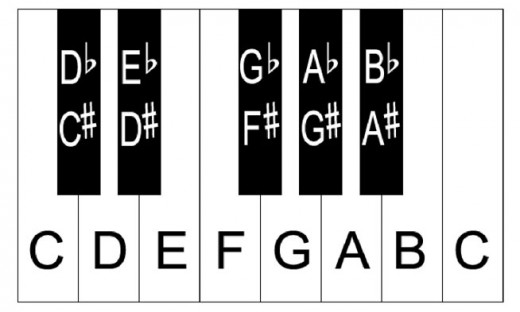
Now you know which note is which on the piano keyboard
If you want to learn more, read this article which will give some good advice on which books to buy if you're looking to learn how to play the piano.


